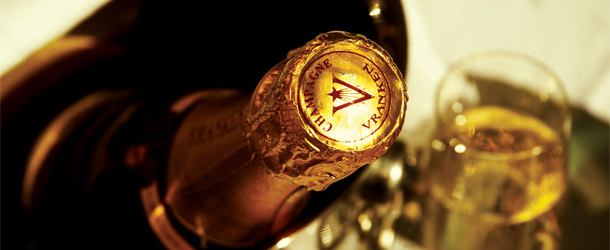One of the iconic features of luxury cruising is Champagne. Picture yourself on the deck of one of our six star ships, and you’re likely to have a glass of bubbly in your hand. But how much do you know about Champagne? Here are ten facts, ranging from the factual to the fascinating, to help you get to know this delightful drink in a bit more detail.
#1 To qualify to bear the name of Champagne, it must be produced in the Champagne region of France. This may be commonly known but did you know how strongly it’s enforced? In 2008 more than 3,000 bottles of sparkling wine produced in California were destroyed due to being labelled as Champagne.
#2 There are less than 100 calories in a typical glass of Champagne, and there are less calories in 100ml (around 76) than there are in non-sparkling wines (between 80 and 90). So it’s definitely justifiable to drink!
#3 The largest bottle of Champagne you can buy is a Melchizedek, which can hold up to 30 litres of fizz, the equivalent of 40 standard bottles. These can sell for up to £4,000 though, and are usually only available on special order
#4 One bottle of Champagne holds somewhere between 47 and 49 million bubbles. That’s quite a few when you think about it.
#5 Champagne was never an intentional creation, and the sparkling quality was seen as a problem. However the British, who were ordering bottles, loved this creation and reportedly requested every bottle available.
#6 The glass in which Champagne is served has an impact on bubbles, as they form on imperfections. Some glasses even include small scratches or indents, designed to increase the number of bubbles in the drink.
#7 The ideal serving temperature for Champagne is between 7 and 9 degrees centigrade. This is best achieved with a couple of hours in a fridge, a quick blast in a freezer or, more traditionally, around twenty minutes in a bucket consisting of 50% ice and 50% water.
#8 Sabrage is the official term for opening a bottle of Champagne using a sabre or other blade. You don’t actually use the sharp end of a sword or knife for this technique, you’d use the blunt end – it’s the force rather than sharpness that causes the neck to break off.
#9 Unlike still wine, where swirling a glass can help deliver the aromas and flavours nearer the surface, doing the same with Champagne is a bad idea – the bubbles do this job for you, and swirling the glass will simply lose the bubbles faster.
#10 A Champagne cork can reach speeds of up to 40mph. Be careful when you’re popping!
By Ian Lewis
Google




Comments: no replies